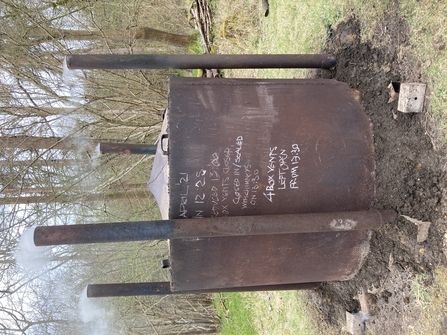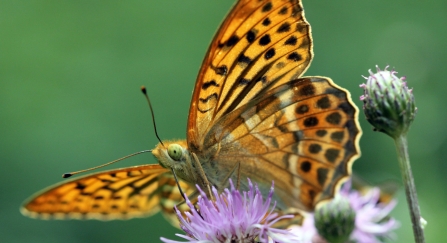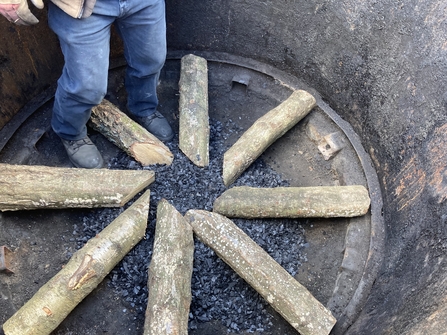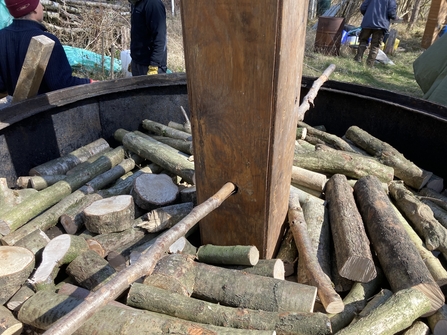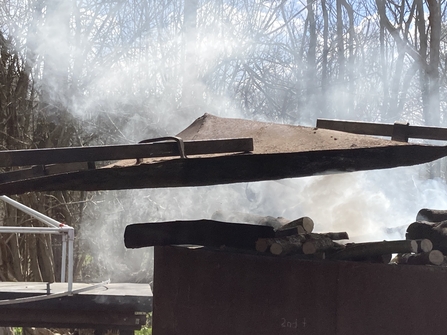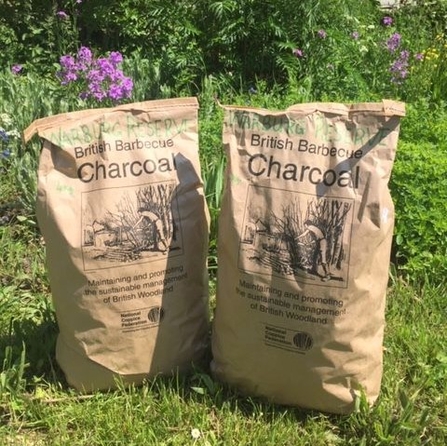BBOWT volunteers at Warburg Nature Reserve, nr Henley, have been continuing the traditional technique of making charcoal from wood, producing a sustainable product which is also of benefit to the woodland plants, insects and mammals.
Originally charcoal was produced in earth piles or “clamps” covered with turf but a metal kiln with air inlets and chimneys is now used. The kiln is stacked with air dried hard wood, which has been coppiced from the reserve as part of the woodland management work programme.


